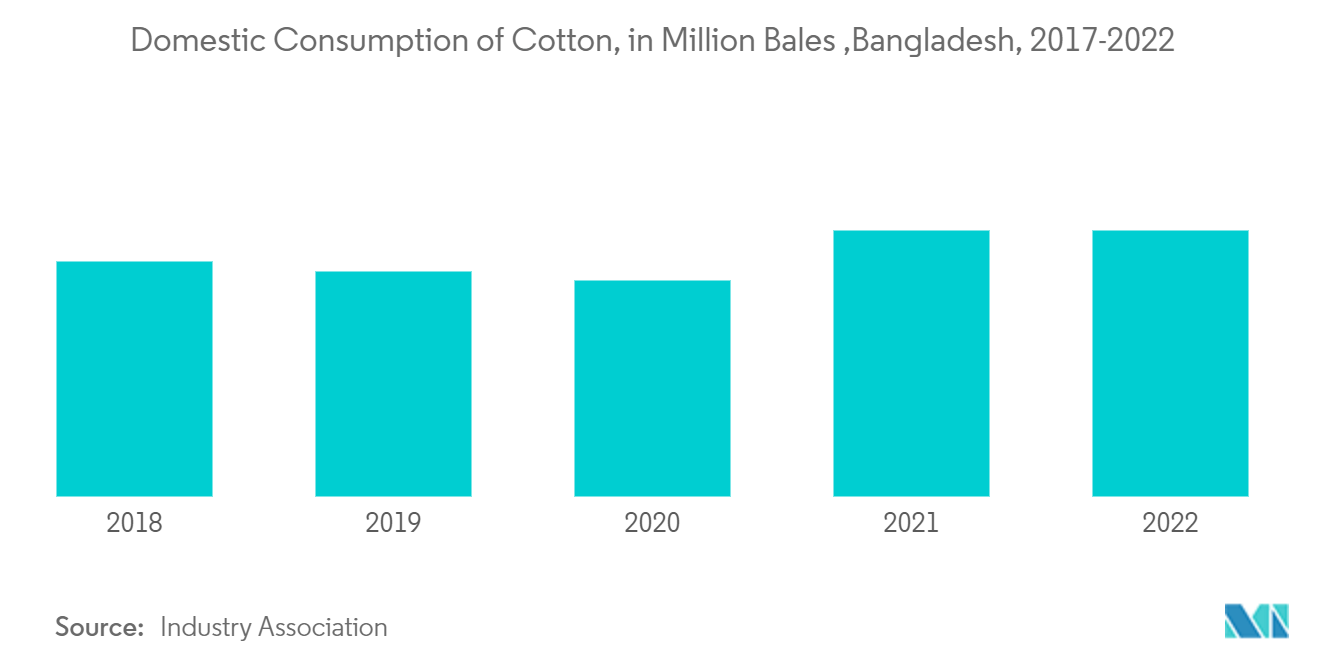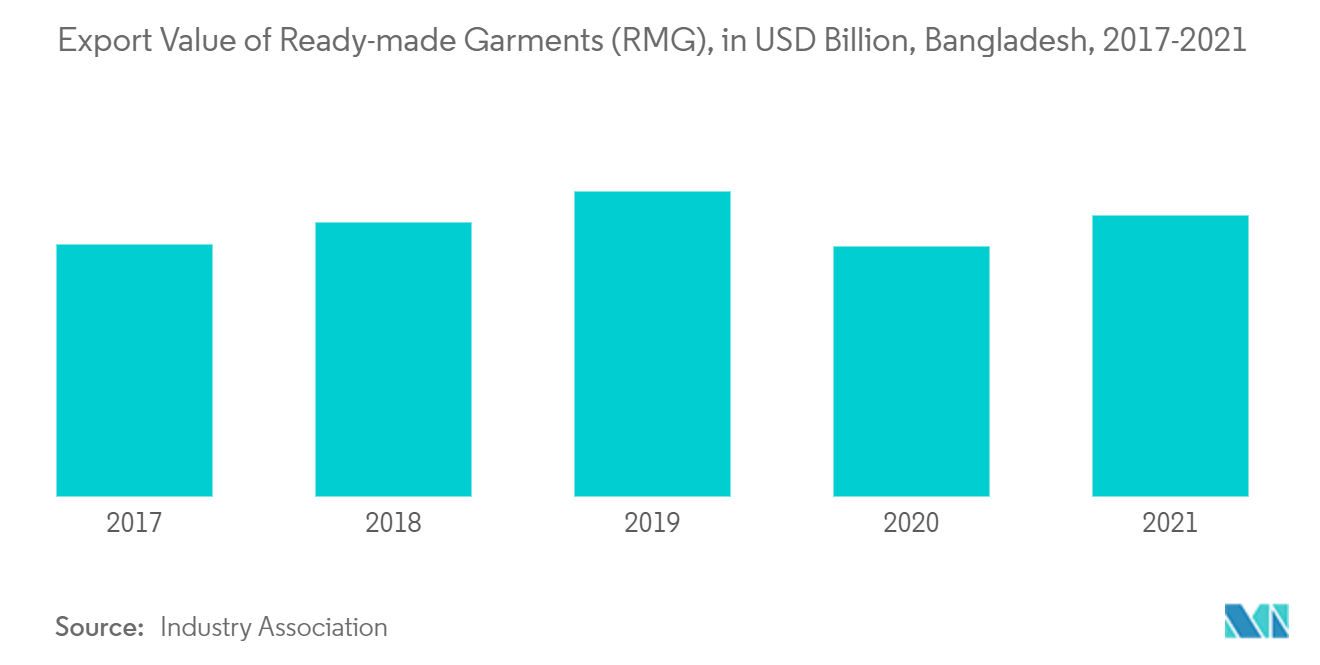Market Trends of Bangladesh Textile Manufacturing Industry
This section covers the major market trends shaping the Bangladesh Textile Manufacturing Market according to our research experts:
Increasing Demand for Natural Fibers
Natural fiber composites are relatively lighter and stronger than conventional fibers. Thus, they find extensive applications in the automotive industry for interiors and exteriors. Natural fibers obtained from plants and animals include cotton, silk, linen, wool, hemp, jute, and cashmere. These fibers are widely used to manufacture garments, apparel, construction materials, medical dressings, and the interiors of automobiles. Silk is used in upholstery and apparel, as it is available in both variations: fine and coarse. Wool and jute are used as textile materials for their resilience, elasticity, and softness. Despite lower production volume, the requirement for raw cotton for the textile industry is very high. In 2022, approximately 8.5 million 480-pound bales of cotton were consumed in Bangladesh, an increase from 2020, when just over 6.9 million 480-pound bales of cotton were consumed in Bangladesh. The increasing consumption of natural fibers, such as cotton, silk, wool, and jute, will likely drive the Bangladeshi textile manufacturing market during the forecast period.

Clothing Export is the Main Growth Driver
Currently, Bangladesh is the second-largest clothing exporter in the world, behind China. There are more than 4,500 factories presently operating within the industry, with most of them located around Dhaka. The garment industry in Bangladesh continues to drive economic growth for the country, contributing a 6% average annual growth rate since 2007. The garment industry accounts for about 80% of all export earnings achieved by Bangladesh each year. Europe receives 61% of the exports that are created by the Bangladesh garment industry every year. About 75% of Bangladesh's manufacturing employment is held within the clothing and textile sector. At the same time, up to 75% of the value-added amount generated by the industry goes to retailers or producers. Emerging export markets for Bangladesh represent 15% of the total exports the garment industry can achieve. The emerging markets include China, Brazil, Japan, and Australia.
In comparison, the United States accounts for 21% of the exports achieved by the industry each year. For knit clothing, the United States leads the export market, accounting for 37% of the purchases. Germany and the United Kingdom account for 24% of total knit purchases. Outside of Europe and the United States, only Canada provides more than USD 1 billion in export revenues to the Bangladeshi garment industry each year.
In 2021, the share of ready-made garment (RMG) exports in Bangladesh amounted to approximately 81.16% of the total exports. Although a decrease from the previous year, this was an increase from 2012, when RMG exports accounted for approximately 78.5% of the total exports to Bangladesh. In 2021, the export value of ready-made garments (RMG) in Bangladesh amounted to approximately USD 31.46 billion, an increase from the previous year when RMG exports to Bangladesh amounted to just about USD 28 billion. With the clothing industry being such an important aspect of the Bangladeshi economy, the textile manufacturing industry is extremely important for the country and directly benefits from clothing exports.

